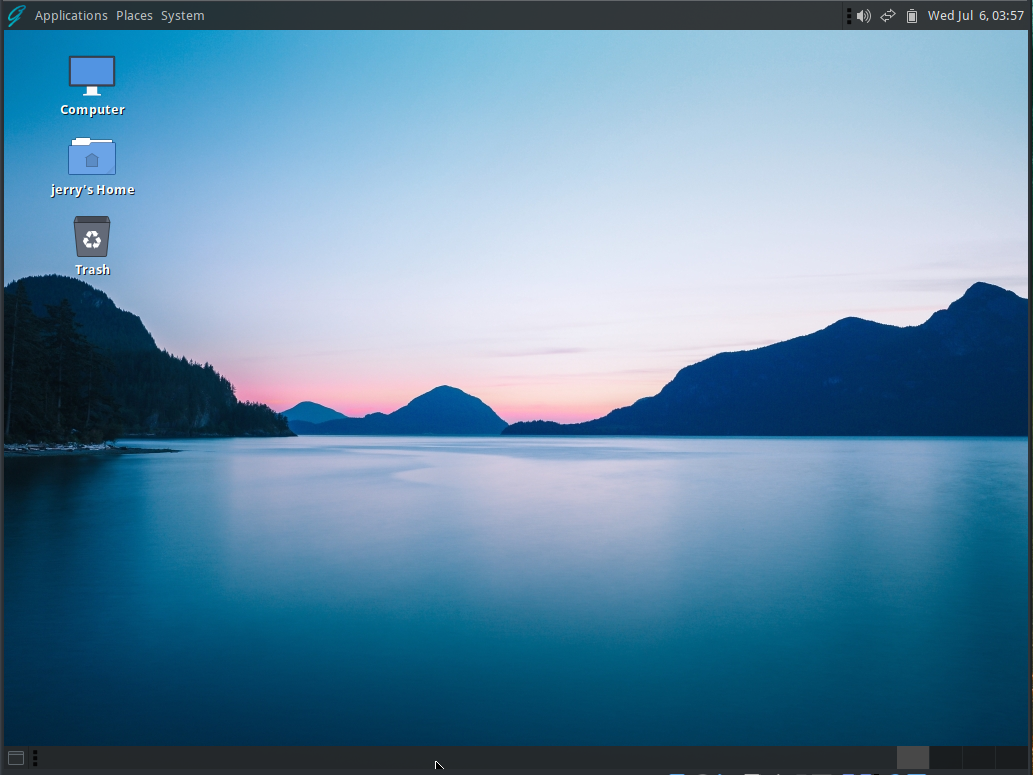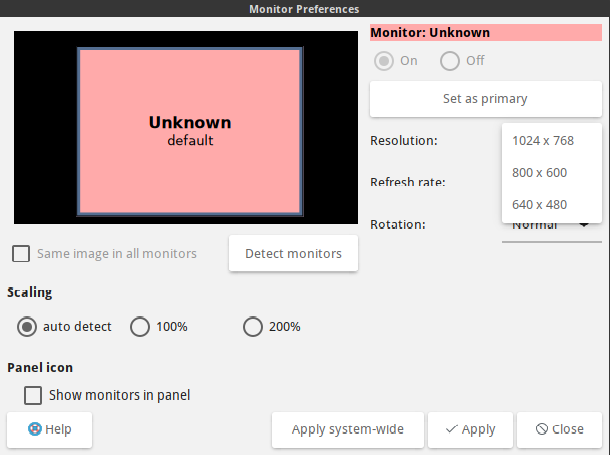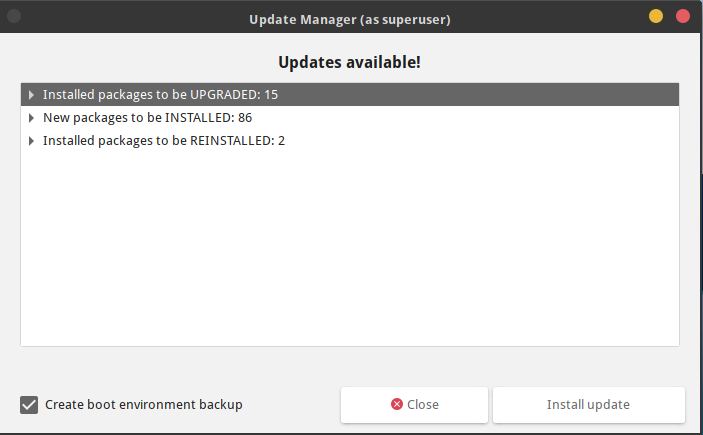GhostBSD
Thanks to everyone who responded with suggestions. In the end, I decided to try GhostBSD, and that indeed resolved my curiosity about modern UNIX systems.
Downloading the ISO was somewhat interesting. I selected the XFCE community edition, chose the US mirror, and provided a save-to destination (my ISOs share), but nothing happened for quite a while. Then I bailed out and tried the MATE edition, from the Canadian mirror, and again nothing happened for quite a while. As I was considering what to do next, a download actually started, and I ended up with the MATE DE, so that had to have been the Canadian mirror that finally came to life.

The VM window was the standard 800x600 that VirtualBox starts out with, so I was squinting to see what I was doing. Most VMs I've created would allow me to choose a larger resolution, and the window would automatically resize itself accordingly, so I looked for the MATE Control Center and tried to do just that. It turned out that there were only three resolutions available, from postage stamp size on the small end, to postcard size (1024x768) on the large end, all in a 4:3 aspect ratio. Most of the other settings there were disabled, and did nothing,

I was already using the largest size available, so there was nothing for me to change. On my HD screen, though, it was a challenge to work with. There was a scaling choice that reminded me of an older Budgie -- just 1x or 2x. I tried the 2x setting, but that was a mistake. The image doubled in size, but the window did not, so I couldn't scroll down far enough to reach the scaling setting and set it back to 1x. Actually, I couldn't scroll far enough to do anything with it, so I shut it down and rebooted.
As one final attempt, I decided to try xrandr in the terminal. I assumed that it originated with UNIX, and that turned out to be right. But this is as far as I got with that.

The next time around, I was a bit smarter. I didn't try to mess with the resolution, but scanned through the settings to see if there were anything else I should be changing. While I did that, I saw a pop-up notification that there were upgrades available. I looked through the menus to see if I could locate anything like a Software Center where I could do the update. Maybe there would be upgrades that would allow me to use a higher resolution? I knew that VirtualBox supports 1920x1080 and beyond, and that would make it so much easier to do anything more with this VM.
I found a Software Station, and that provided an update feature, so I used that. Would the update make it possible for me to improve the screen resolution?

Nope. That would have been too easy. I use the MATE terminal every week (almost) to do an update for my Solus MATE VM, so I knew that would be familiar, and I had opted for BASH as my choice of available terminals when I installed. But once I got the terminal open, what would I do next? I had no idea what package manager to use to explore the repository.
In the end, as I said at the beginning of this post, my curiosity has been resolved. I'm glad I took the time to try this, but in my opinion, comparing BSD to a modern Linux is like comparing Windows 3.15 to Windows 10. Firefox was provided by default, so I could have done some browsing, but I would have prefered to install Vivaldi, do a sync, and set up Vivaldi Mail (my standard configuration for exploring a distro). Doing that in a tiny window, though, just didn't have much appeal.
Caja is a familiar tool, so I used it to look around the file system. That seemed very much like a Linux file system. VERY much. Caja even connected with my NAS (through its SMB portal), and for a minute I was excited about the possibility of modifying /etc/fstab and mounting those shares. Obviously, Pluma was not designed to be used in the terminal, because when I tried to use it to add my NAS shares to /etc/fstab, it generated a whole lot of several kinds of errors, but in the end it actually worked. I was able to modify and save /etc/fstab.
That's about where it ended, though. When I tried to mount -a as root, I just got "file type" errors. Obviously, nfs support wasn't a default. I needed something like nfs-utils or nfs-common in order to get those shares mounted. So I needed to look for a package manager I could use. I returned to the host machine (for a larger image) and asked Duck Duck Go to tell me about a GhostBSD package manager. The DDG results looked promising, but everything I clicked on resulted in a page containing a rich-text editor that I could use to create the page I was looking for.
So, with no idea how to install nfs support, or even how to find out if it exists in the BSD repository, that pretty much ended my connect-to-the-NAS adventure. And with only a tiny window on my laptop screen to work with, I'd pretty much used up my original curiosity about modern UNIX system. I saw no point in trying to configure Firefox and install LastPass there.
I thought it was unlikely to help, but I decided to try installing the VBox guest additions to enable resizing the display. That might have encouraged me to research more, and keep trying to make things work for me.
I started Caja from the terminal as root, and found the extension pack in CD0 where I'd inserted it, but that's where it ended. A double-click on autorun.sh just flashed a tiny terminal window on and immediately back off, so the autorun script couldn't find anything to install. I couldn't find any support there for UNIX at all, and nothing else would do.
I decided to call it a day. It's indeed been interesting, and I'm glad I did this. Again I'd like to thank those who helped me to get this far.